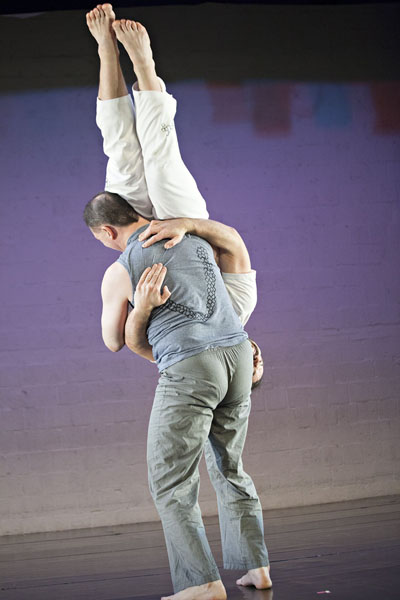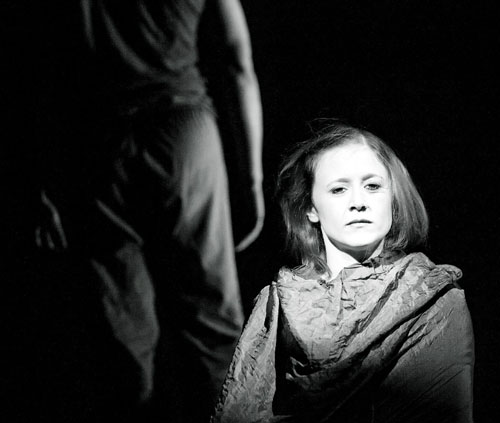"Shute’s final tour de force was the disembodied head of Medusa, performed by Heather Doyle, using eyes, eyebrows and soundlessly moving mouth to convey wonderment at all that she no longer had to bother with now, like painting her toenails. It was delightfully humorous and weird."--from the Washington Post review of Human Landscape Dance's performance at Dance Place, Washington DC, in December, 2012, by Pamela Squires.
“Medusa" unpacks the personal struggles of this painful figure: persecuted by gods and shunned by people, yet a survivor.
In Human Landscape Dance's rendition of this tale, we emphasize the challenge of having our lives run by capricious gods. Perseus’s beheading of Medusa is often considered heroic, but he is a pawn of Athena. He does not meet Medusa until he is clothed by the gods, down to his shoes, and his very hand is guided by that of Athena. Medusa is herself a victim of the gods. Poseidon rapes her in Athena’s temple. As a punishment, Athena transforms Medusa into a monster. In our dance, Perseus, wrapped in a half nelson by Athena, falls onto the stage. They roll, Athena flips Perseus upward, they land, and Perseus twists away again.
Medusa is embodied by three dancers. They cling together, dragging each other in turn from point to point, like the coils of a snake. They represent the intertwining relationships that direct our lives: drawing us in unforeseen directions.
Athena, who condemned Medusa with terrible powers, ultimately creates a monster she cannot destroy. Medusa’s head lives on forever upon Athena’s shield. In our dance, Heather Doyle performs a solo for the head and face alone: eyes scanning, lips working soundlessly, eyebrows wandering. Her internal monologue, voiced through the speakers, is hopeful. She takes stock of her situation, making plans for her life as head alone.
Photos on this page by Siobhan Hanna. Videography by Denaise Seals.

